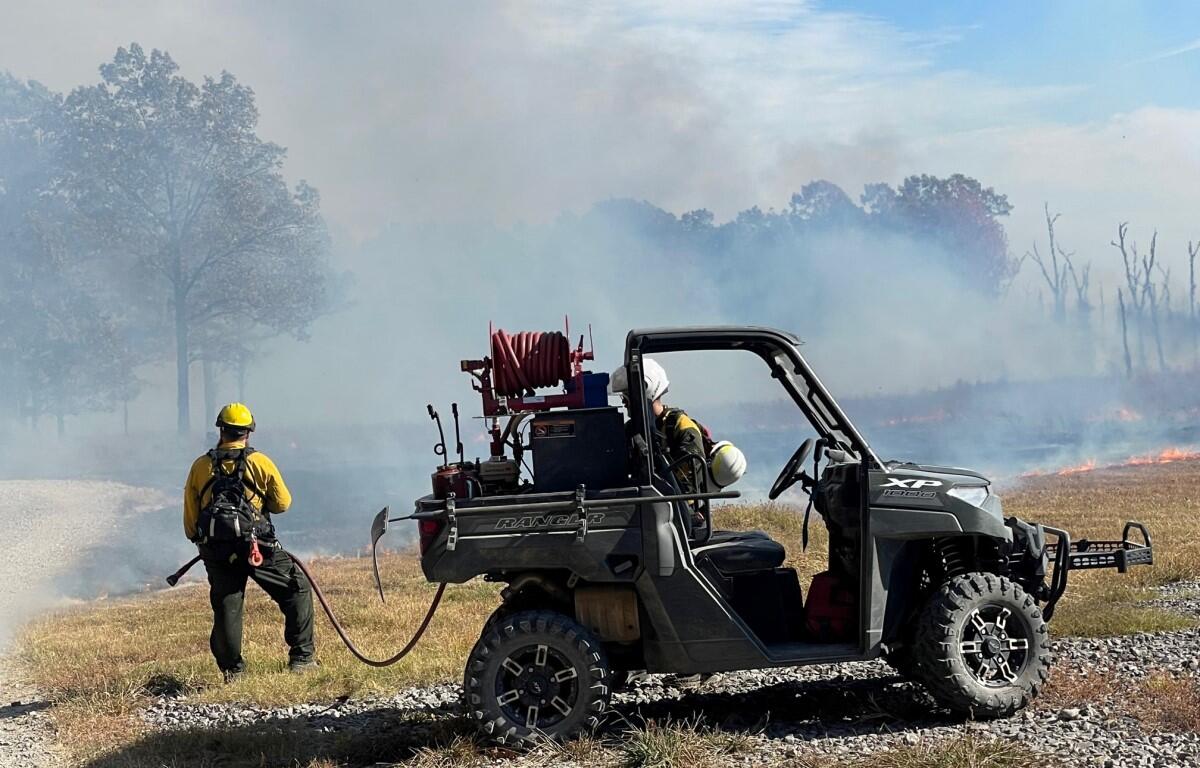FORT CAMPBELL, KY (CLARKSVILLE NOW) – Fort Campbell crews are working to manage a fire that started in a training area near Trigg County, Kentucky, on Friday.
The fire started during routine training, according to a news release from the post.
Staff from the Directorate of Public Works; the Directorate of Plans, Training, Mobilization and Security; and the Directorate of Emergency Services are employing controlled burn techniques to manage the fire.
“We’ve lit back fires to create a buffer of space,” Clinton Allen, DPW Conservation Branch chief, said in the release. “The back burns will help keep it from getting closer to the boundary with Land Between the Lakes.”
The fire has burned through several hundred acres in an area that DPW addresses annually with controlled burns. The Forestry Section of the DPW Environmental Division burns approximately 20,000 acres each year to support training operations and preserve the natural environment. Controlled burns typically occur in March and November and are focused on the small arms impact and the north and south impact areas.
“If the impact area hasn’t been burned, it will catch on fire, and then we slow down training by responding to it,” J.P. Hart, DPW forester, said in the release. “Controlled burns allow the soldiers to train a lot more, and they aren’t being held up from having to stop or check their fire.”
Hart encourages individuals across the installation’s rear training area to keep an eye out for potential hazards if they see smoke or fire.
“If you’re seeing fire or smoke in an area and you’re concerned, contact dispatch, range control or the fire desk,” he said. “You might be the one who actually calls in a wildfire so we can get it put out quicker.”
DPTMS Range Fire Desk can be reached at 270-798-4122 if community members are concerned about a fire in the rear training area, which may also indicate controlled burns taking place.
The controlled burn process also helps DPW preserve The Barrens, a grassland habitat spanning more than 7,000 acres across the rear training area. It was originally part of a 200-mile Native American hunting stretch called the Big Barrens, according to Fort Campbell Cultural Resources.
Fort Campbell Courier reporter Ethan Steinquest contributed to this report.


